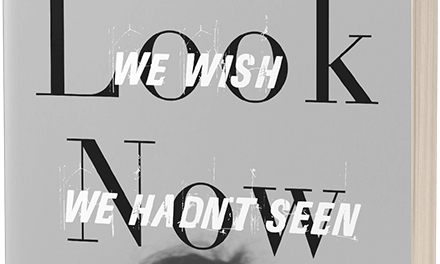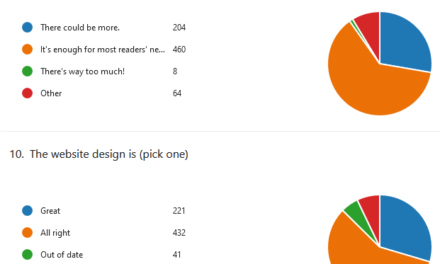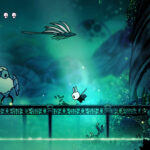
Assistant Editor Kate Jayroe: Here at CR, we’ve been really excited about not just one, but two collaborative opportunities with miCRo. We’ve been working with Huan Hsu, a writer and instructor at Amsterdam University College, whose students have acted as guest editors for two forthcoming miCRos. In addition, I’ve been collaborating with Christopher Allen, the editor-in-chief of SmokeLong Quarterly, as one of several lit mag editors judging contest work. The winning entries from us, 100 Word Story, and Citron Review will all be featured over at SmokeLong! I spoke with Christopher about the qualities we love as editors when considering micro-length work (500 words or less) and anonymously judged entries for SmokeLong’s 2025 March Micro Marathon! We agreed that a fantastic micro establishes an immediate guide for the reader, showing them how to interpret the micro’s tonal world, then immerses the reader in its emotional depth.
Before we announce the winner and present their micro, here are a couple of brief takeaways concerning both of these collaborations.
- I’d never deeply considered the pedagogical aspect of micro writing before! The benefit of brevity works really well when considering a creative work in its entirety. The compressed, distilled quality of micro writing can also help demonstrate to students how they might work both within and outside of the boundaries of genre. With the constraint of word count, craft factors like genre, plot, and character enter a distillation mode. This can offer truly poignant and concentrated creative work that allows writers to follow their intuition, while easing away from the pressures of other craft conventions.
- Collaborating is fun! I know that sounds super simplistic, but hear me out. Writing, as we know, is often a solitary activity. And what happens when we’re alone? If you’re like me, that inner critic might show up and then commence pressuring you to achieve, to publish, to compare yourself to other writers. Collaborating on the editorial level brought me back to what this is all about: community. We’re gathering work that we want to celebrate with readers. It can really be that simple and it can truly be that fun. And it is!
When I was reading entries for the Micro March Marathon at SmokeLong Quarterly, I felt genuinely moved by the strength of each piece. I felt the vivacity of each micro not only shifting and strengthening my editorial chops but likewise training me as a reader. Each piece rewarded me for visiting it in distinct and surprising ways.
“The Meat Ration” by Kate Horsley effectively establishes a credible historicity. This micro utilizes rich language, particularly with food, and the ending packs that capital-T tragedy punch via the heartbreaking notion of Frank, if he were alive, falling out of love with Hilda for what she’s had to resort to in his absence. So haunting and sad. And beautiful!
I’m SO excited to share this striking piece with the CR audience. Here it is!
The Meat Ration
Hilda stands barefoot in the damp sand, shivering. She can’t look out at the frozen sea without imagining Frank on the seabed; Frank with his pale eyes that looked inside her somehow. Instead, she stares at marram grass peppering the Grimsby dunes like unruly beard, while the butcher kneels in the sand behind her; the tallow pencil he uses for carcasses licks the back of her knee. The butcher says that the brown line is like the seam of a stocking, that when she walks up the road, everyone will think she’s a lady. Marking her like meat, though actually she doesn’t care. She just stays still, trying not to smell blood on the butcher’s fingers, her body as empty as a conch with the wind whistling through it.
After the butcher buttons his flies, they walk to his van and he gives her a string of pork sausages to bring home to her boy, who turns six tomorrow, bless his sweet face. She’s got a tin of government-issue pineapple that’s really turnip in syrup, flour and sugar she had off the baker, potatoes from the greengrocer, swapped for whatever they wanted. In her head, she’s already frying sausages and baking cake and sticking a candle on top and her little boy is clapping his hands because for once it won’t be tea tablets and powdered milk and gray bread and horse meat, whale meat, green meat not fit for humans, carrots, bloody carrots with everything. For once they’ll eat, because she’s scrimped all week to make it happen.
On the street, the wind’s a knife, and she presses the parcel of meat to her chest. Two women from church who used to be friendly eye her and cross the road, and she thinks how they made an effort to be kind when Frank was alive, and how the week before that German mine sunk his ship, she had her palm read and the woman said death was coming, and how she wakes thinking Frank will burst in and wrap her in his arms. But then she imagines him hearing the gossip at church, taking note of the sausages and the butcher’s tallow-seam stockings, the love in his pale blue eyes quietly fading.
Kate Horsley’s first novel, The Monster’s Wife was shortlisted for the Scottish First Book of the Year Award. A subsequent novel, The American Girl, was published by William Morrow (US) and Harper Collins (UK) and translated into Korean by Tomato Publishing – —both books have been optioned for film. Her poems and short stories have appeared in a number of anthologies such as Best British Crime Stories, magazines like Strix, Fictive Dream, Storyglossia, Momaya, Needle, & Cake, and placed in competitions including Bath, Bournemouth, Bridport, Frogmore and Oxford Flash Fiction. She is a creative writing lecturer. https://www.katehorsley.co.uk/











